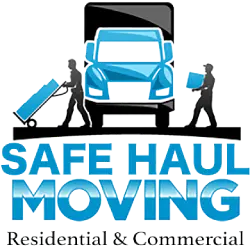
Are There Moving Companies in Walnut Creek That Offer Packing and Unpacking Services?
May 20, 2023
What to Expect on Moving Day With a Moving Company
May 20, 2023Moving can help you break free of a stagnant lifestyle and give you new perspectives about yourself – including negative habits, toxic relationships and any obstacles which have been keeping you back.
HireAHelper reports that this year has been the costliest ever for hiring professional movers.
1. Increased Demand
Moving companies tend to experience high volumes of activity during spring and summer seasons, however this year has been particularly challenging due to high customer demand in states like California and New York. This demand for moving services has caused rate increases, delivery delays, and other inconveniences that have made customers’ moving experiences unpleasant.
Fuel costs have also significantly increased, having a direct effect on moving truck costs and passing along this increase to clients as part of an increase in costs for moving services this year. When combined with other factors, this has made 2017 one of the costliest years ever in terms of moving services.
2. Increased Gas Prices
Gas prices can be one of the most significant costs when moving, whether you opt to do it yourself or hire professional moving services. They can quickly add up, which makes the decision-making process difficult and can add an unexpectedly large bill for moving costs.
Fuel charges typically comprise 10-20% of full-service relocation rates, which can add up quickly when prices increase dramatically. Furthermore, most movers use diesel trucks which cost more to operate than their gasoline-powered counterparts.
Note that many moving supplies, including boxes, tape, bubble wrap and packing paper require gas consumption – check prices of these items separately as purchasing them yourself may save money or schedule your move for a time when gas prices are lower in general. Also try scheduling your move during off-peak hours or to states with lower average gas costs to save even further!
3. Increased Labor Costs
Labor costs can be one of the greatest hidden expenses when moving. Local movers typically charge by the hour for their services, while even smaller moves usually need multiple movers to load and unload your belongings. Although you might save some money by recruiting friends or family to assist, this cost could quickly accumulate when traveling across states or countries.
Due to the COVID epidemic, many moving companies have had trouble hiring workers at standard rates – this makes hiring new movers more costly than usual and therefore it may be best to wait until after summer when rates should decrease again. You could also try saving costs on your move by gathering supplies such as boxes, tape, bubble wrap and paper from stores and family in advance of moving day.
4. Increased Equipment Costs
Movers require equipment for any move to transport items from point A to point B, including truck rental costs, dollies and ramps – these costs typically get passed onto customers in addition to hourly moving rates and add-on services like white glove services.
Location can greatly impact the cost of moving. For instance, an apartment without an elevator will increase moving costs since movers must transport furniture up and down stairs instead of using elevators – thus taking more time and people.
Your overall moving costs will increase with any storage fees, which could range anywhere from $50-$200 a month per storage unit or container.
5. Increased Insurance Costs
Insurance costs associated with moving companies can add significant costs. These fees typically include limited liability coverage, value protection and storage rates that may vary.
Moving locally may be relatively affordable, while cross-state moves can become much more costly due to distance. Furthermore, specialty items like pianos or large refrigerators may increase costs even more significantly.
Size plays a critical role in the cost of moving. A larger home or apartment will typically require more boxes and additional labor hours for loading, while multiple flights of stairs add to costs due to wear-and-tear issues on movers – particularly true if your residence lacks access to an elevator service.




